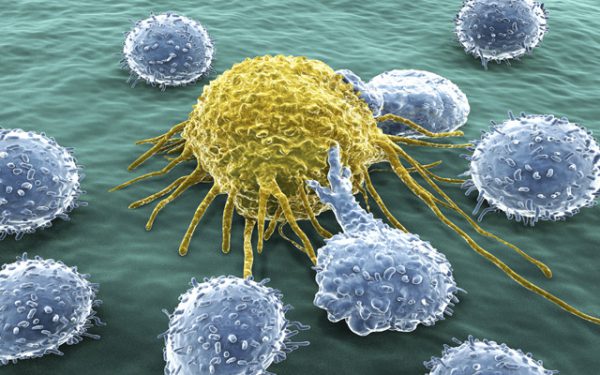Once you reach your weight-loss goals, keep protein pacing part of your plan for long-term, sustainable weight maintenance.
As a professor of health and exercise sciences and director of the Human Nutrition and Metabolism laboratory at Skidmore College, Paul Arciero, Ph.D. has been a key figure in protein pacing research. He was the lead researcher in a series of studies, including those that involved Isagenix® products, investigating protein pacing for weight loss, weight maintenance, cardiovascular health and athletic performance (1-6).
What Is Protein Pacing?
‘Protein pacing’, Dr. Arciero defines, “is the scientifically proven combination of eating healthy, lean, protein foods at the right time of day to maximise health and performance.”
Simply put, protein pacing calls for consuming 20 to 40 grams of protein spread evenly across four to six meals per day. Consuming protein throughout the day in an amount that your body can use efficiently helps to stimulate muscle protein synthesis, stimulate your metabolism, and most importantly, keep you satisfied to help manage appetite (5-9).
Dr. Arciero led the first long-term study to evaluate weight-loss maintenance with Isagenix products. The study design included two phases: a 12-week ‘weight loss’ phase using Isagenix products followed by a 52-week ‘weight maintenance’ phase. During the second phase, participants split into two groups who either continued to use Isagenix products as part of a maintenance plan, or transitioned to a heart-healthy diet for weight maintenance (6).
By the end of the first phase, all participants lost an average of 10 percent of their total body weight, along with nearly 20 percent body fat and 33 percent visceral fat. In the second phase of the study, the group using Isagenix products maintained the weight loss they had achieved in the first phase of the study, continued to lose body and abdominal fat and made gains in lean body mass. Those who switched to a heart-healthy weight maintenance diet regained the weight they had lost during the first phase of the study, despite a lower average calorie intake.
The results of this long-term study demonstrated that protein pacing combined with the quality nutrition, ease and flexibility of an Isagenix System are effective at helping both men and women successfully maintain their weight-loss results.
Put Protein Pacing to Work in Your Weight-Maintenance Plan
Isagenix products make it easy by taking the guess work out of protein pacing. Options like IsaLean™ Shakes or Bars, IsaLean™ PRO and snack options like Whey Thins™ or Harvest Thins™ are designed to provide the right amount of high-quality protein to support your goals.
When transitioning from a structured weight loss system to a more flexible weight-maintenance plan, tracking how much protein you are consuming at each meal with a food diary application like the IsaLife™ app can help you stay on track. Get in the habit of reading labels and logging what you eat and protein pacing will soon become second nature.
Here is one example of how someone on a weight-maintenance plan might incorporate both Isagenix products and protein pacing in a typical day. Your plan might look different depending on a variety of factors, including your goals and physical activity level.
Breakfast:
½ cup oats + 1 tbsp. peanut butter + 1 scoop IsaPro™
1 hardboiled egg
420 calories/ 32 grams of protein
Snack 1:
150g non-fat plain Greek yoghurt + ½ cup raspberries + 1 tbsp. chopped walnuts
130 calories/ 20 grams of protein
Lunch:
IsaLean™ PRO Shake
280 calories/ 36 grams of protein
Snack 2:
1 pack Whey Thins™
1 mozzarella cheese stick
1 cup sugar snap peas + 1 cup carrot sticks
220 calories/ 20 grams of protein
Dinner:
100g grilled chicken + 1 tbsp. teriyaki sauce + 2 cups steamed broccoli + ½ cup cooked brown rice
2 cups chopped kale + ½ cup cherry tomatoes + 1 tsp. olive oil + squeeze of lemon juice
430 calories/ 35 grams of protein
Snack 3:
1 scoop IsaPro™ + 1 scoop Isagenix Greens™
130 calories/ 19 grams of protein
Total: 1,610 calories/ 134 grams of protein
References
1.Arciero PJ, Miller VJ & Ward E. Performance Enhancing Diets and the PRISE Protocol to Optimize Athletic Performance. J Nutr Metab. 2015; 2015:715859.
2.Arciero PJ, Ormsbee MJ, Gentile CL, Nindl BC, Brestoff JR & Ruby M. Increased protein intake and meal frequency reduces abdominal fat during energy balance and energy deficit. Obesity. 2013 Jul; 21(7):1357-66.
3.Arciero PJ, Gentile CL, Martin-Pressman R, Ormsbee MJ, Everett M, Zwicky L & Steele CA. Increased dietary protein and combined high intensity aerobic and resistance exercise improves body fat distribution and cardiovascular risk factors. Int J Sport Nutr Exerc Metab. 2006 Aug; 16(4):373-92.
4.Arciero PJ, Ives SJ, Norton C, Escudero D, Minicucci O, O’Brien G, Paul M, Ormsbee MJ, Miller V, Sheridan C, He F. Protein-pacing and multi-component exercise training improved physical performance outcomes in exercise-trained women: PRISE 3 study. Nutrients2016, 8(6), 332; doi:3390/nu8060332
5.Ives SJ, Norton C, Miller V, Minicucci O, Robinson J, O’Brien G, Escudero D, Paul M, Sheridan C, Curran K, Rose K, Robinson N, He F & Arciero PJ. Multi-modal exercise training and protein-pacing enhances physical performance adaptations independent of growth hormone and BDNF but may be dependent on IGF-1 in exercise-trained men. Growth Horm IGF Res. 2016 Oct 24. doi: 1016/j.ghir.2016.10.002
6.Arciero PJ, Edmonds R, He F, Ward E, Gumpricht E, Mohr A, Ormsbee MJ & Astrup A. Protein-Pacing Caloric-Restriction Enhances Body Composition Similarly in Obese Men and Women during Weight Loss and Sustains Efficacy during Long-Term Weight Maintenance. Nutrients 2016, 8(8), 476.
7.Krieger JW, Sitren HS, Daniels MJ & Langkamp-Henken B. Effects of variation in protein and carbohydrate intake on body mass and composition during energy restriction: a meta-regression. Am J Clin Nutr. 2006 Feb; 83(2):260-74.
8.Crovetti R, Porrini M, Santangelo A & Testolin G. The influence of thermic effect of food on satiety. Eur J Clin Nutr. 1998 Jul; 52(7):482-8.
9.Phillips SM. A brief review of critical processes in exercise-induced muscular hypertrophy. Sports Med. 2014 May; 44 Suppl 1:S71-7.





